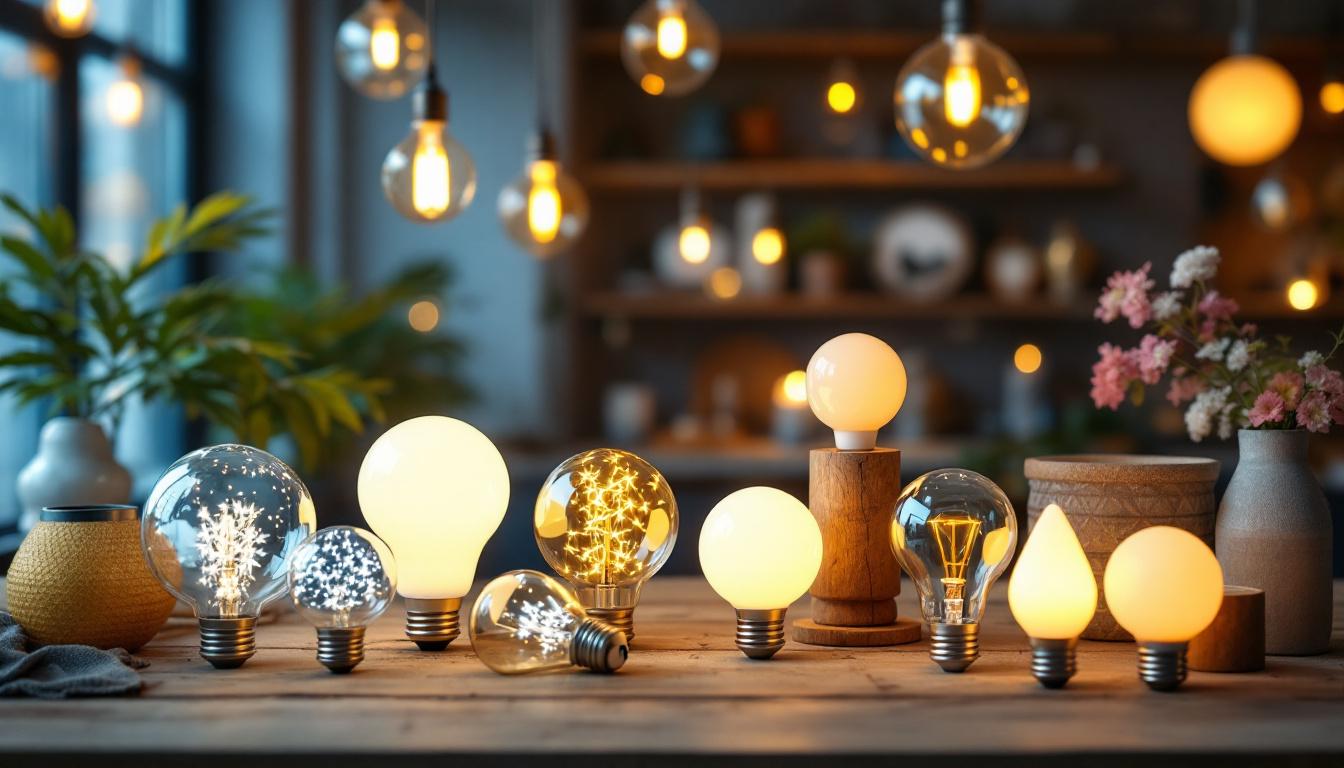
For lighting contractors, electronic ballasts are a critical component in the design and installation of fluorescent lighting systems. Unlike traditional magnetic ballasts, electronic ballasts use solid-state electronics to regulate the current to the lamp, providing a more efficient and reliable power source. This technological advancement has transformed how lighting projects are approached, offering numerous benefits that directly impact installation, maintenance, and overall project outcomes.
Electronic ballasts operate by converting the standard line voltage to a high-frequency output, typically between 20 kHz and 60 kHz. This high-frequency operation eliminates the flicker and humming commonly associated with magnetic ballasts, resulting in a more comfortable and visually appealing lighting environment. For contractors, this means fewer callbacks and increased customer satisfaction.
Electronic ballasts are lighter and more compact than their magnetic counterparts, simplifying handling and installation. Their energy efficiency is another major advantage; they consume less power and generate less heat, which can reduce cooling costs in commercial buildings. Additionally, electronic ballasts often support instant start or programmed start modes, which extend lamp life and reduce maintenance frequency.
From a contractor’s perspective, these features translate into tangible benefits: quicker installations, reduced labor costs, and enhanced system longevity. Moreover, many electronic ballasts are compatible with dimming controls and occupancy sensors, enabling more sophisticated lighting designs that meet modern energy codes and client expectations.
Furthermore, the integration of electronic ballasts into lighting systems can lead to significant environmental benefits. By utilizing less energy, these ballasts contribute to lower carbon footprints for buildings, aligning with the growing emphasis on sustainability in construction and design. As energy efficiency standards become more stringent, contractors who adopt electronic ballasts can position themselves as leaders in eco-friendly practices, appealing to environmentally conscious clients. Additionally, the reduced heat output from electronic ballasts not only enhances comfort but also minimizes the burden on HVAC systems, further promoting energy savings and operational efficiency.
Another noteworthy aspect is the adaptability of electronic ballasts in various lighting applications. They are suitable for a wide range of fluorescent lamps, including T8 and T5, and can be utilized in diverse settings, from commercial spaces to industrial environments. This versatility allows contractors to tailor lighting solutions that meet specific client needs while ensuring compliance with local regulations. As technology continues to evolve, the potential for integrating smart lighting systems with electronic ballasts opens up new avenues for innovation, enabling contractors to offer cutting-edge solutions that enhance both functionality and aesthetics in any project.
Integrating electronic ballasts into fluorescent lamp projects requires careful planning but offers significant advantages in execution. Lighting contractors must consider ballast compatibility with lamp types, fixture designs, and control systems to ensure optimal performance. This planning phase is crucial, as it sets the foundation for a successful installation that meets both aesthetic and functional requirements.
One of the primary considerations is the ballast factor, which affects the light output of the lamp. Electronic ballasts typically have a ballast factor ranging from 0.85 to 1.05, influencing both energy consumption and illumination levels. Contractors need to select ballasts that align with the desired lighting quality and energy targets of the project. Additionally, understanding the specific needs of the space—such as the type of activities performed, the desired ambiance, and even the color temperature of the light—can further guide the selection process, ensuring that the lighting not only meets practical needs but also enhances the overall environment.
Because electronic ballasts are more compact and lighter, they simplify fixture assembly and reduce physical strain on installers. Their plug-and-play connectors and standardized wiring also minimize wiring errors and speed up installation times. This efficiency can be particularly beneficial in large-scale commercial or industrial projects where time is a critical factor. Moreover, the reduced weight of electronic ballasts allows for more flexibility in fixture design, enabling architects and designers to create innovative lighting solutions without the constraints imposed by heavier components.
Furthermore, electronic ballasts generate less heat, reducing the need for additional ventilation or cooling measures within fixtures. This can simplify fixture design and installation, especially in confined or temperature-sensitive environments. The lower thermal output not only contributes to energy savings but also enhances the longevity of both the ballast and the lamps themselves, as excessive heat is a common factor in premature failures. Consequently, this can lead to lower maintenance costs and fewer disruptions in high-traffic areas, where lighting is essential for safety and productivity.
Lighting contractors must navigate an evolving landscape of energy regulations and standards. Electronic ballasts are often essential for meeting stringent energy codes such as those set by the U.S. Department of Energy or equivalent bodies worldwide. Their higher efficiency and compatibility with advanced lighting controls make them a preferred choice for projects aiming for LEED certification or other sustainability benchmarks. Staying informed about these regulations is crucial, as non-compliance can result in costly penalties and project delays.
Incorporating electronic ballasts can help contractors future-proof their installations, ensuring compliance not only at the time of installation but also as energy standards become more rigorous. Additionally, the integration of smart lighting technologies, which often rely on electronic ballasts for optimal performance, allows for greater adaptability in lighting systems. This adaptability can include features such as dimming capabilities and occupancy sensors, which not only enhance user experience but also contribute to significant energy savings over time. As the demand for sustainable and energy-efficient solutions continues to grow, the role of electronic ballasts in lighting projects will only become more critical, influencing design choices and project outcomes across various sectors.
Maintenance is a crucial aspect of any lighting project, and electronic ballasts significantly influence the lifecycle costs and reliability of fluorescent lighting systems. Their design reduces common issues associated with magnetic ballasts, such as overheating and coil degradation, which can lead to premature failure.
Electronic ballasts provide a more stable and controlled current, which reduces stress on fluorescent lamps. This results in longer lamp life, sometimes extending operational hours by up to 20-30% compared to magnetic ballast systems. For contractors managing maintenance contracts or advising clients on lifecycle costs, this is a critical selling point.
Additionally, electronic ballasts themselves tend to have longer service lives due to their solid-state construction. While they may have a higher upfront cost, the reduced frequency of replacements and repairs often leads to lower total cost of ownership over the system’s lifespan.
Modern electronic ballasts often incorporate diagnostic features such as end-of-life warnings and fault detection. These capabilities enable quicker identification of issues, reducing downtime and maintenance labor. Lighting contractors can leverage these features to offer enhanced service packages, improving client relationships and project reputation.
Furthermore, some electronic ballasts are compatible with building management systems (BMS), allowing remote monitoring and control. This integration supports proactive maintenance strategies and energy management, which are increasingly valued in commercial and institutional projects.
While electronic ballasts offer numerous benefits, lighting contractors must be aware of certain challenges to ensure successful project outcomes. Understanding these potential pitfalls can help avoid costly mistakes and improve overall project quality.
Not all electronic ballasts are compatible with every fluorescent lamp type or fixture. Contractors must verify ballast and lamp compatibility to prevent performance issues such as flickering, reduced light output, or premature lamp failure. This is especially important when retrofitting existing installations where older lamps or fixtures may be in use.
Additionally, compatibility with dimming controls or sensors requires careful selection of ballasts designed to support these features. Failure to match components correctly can lead to system malfunctions or void warranties.
Electronic ballasts generally have a higher initial cost compared to magnetic ballasts. Contractors need to effectively communicate the long-term energy savings, reduced maintenance costs, and improved lighting quality to clients to justify this investment. Providing clear lifecycle cost analyses and case studies can be valuable in this regard.
Educating clients about the benefits and operational differences of electronic ballasts also helps set realistic expectations and reduces the likelihood of dissatisfaction or misuse.
Electronic ballasts contain electronic components that require proper disposal or recycling to prevent environmental harm. Lighting contractors should be familiar with local regulations regarding ballast disposal and offer responsible recycling options to clients. This not only supports environmental stewardship but also aligns with the sustainability goals of many projects.
The lighting industry continues to evolve, and electronic ballasts are at the forefront of innovation. Staying informed about emerging technologies and market trends can give lighting contractors a competitive edge.
As LED lighting becomes more prevalent, electronic ballasts are being adapted or replaced by LED drivers that perform similar functions. However, many projects still rely on fluorescent lighting, and hybrid systems that integrate electronic ballasts with LED components are emerging. Contractors who understand these hybrid solutions can offer flexible, energy-efficient lighting designs tailored to client needs.
Electronic ballasts are increasingly designed to interface with smart building systems and the Internet of Things (IoT). This connectivity enables advanced control features such as adaptive lighting, occupancy-based dimming, and energy usage analytics. Lighting contractors who incorporate these technologies can enhance project value and meet the growing demand for intelligent building solutions.
Ongoing improvements in ballast design continue to push energy efficiency boundaries. Newer electronic ballasts consume even less power and support a wider range of control options. Contractors should monitor updates to energy codes and product certifications to ensure their projects leverage the most efficient and compliant technologies available.
Electronic ballasts have fundamentally changed the landscape of fluorescent lighting projects, offering lighting contractors enhanced efficiency, improved lighting quality, and reduced maintenance challenges. Their integration into lighting systems supports compliance with energy codes, enables advanced control strategies, and contributes to sustainable building practices.
To maximize the benefits of electronic ballasts, contractors must carefully consider compatibility, educate clients on lifecycle advantages, and stay abreast of technological advances. By doing so, they can deliver superior lighting solutions that meet the evolving demands of the market and ensure long-term project success.
Ready to enhance your lighting projects with the efficiency and sustainability of electronic ballasts? Look no further than LumenWholesale for all your lighting needs. Our spec-grade products are designed to meet the highest industry standards, ensuring you deliver top-notch, reliable lighting solutions. With unbeatable wholesale prices and the convenience of free shipping on bulk orders, you can equip your projects with premium lighting without the extra costs. Don’t compromise on quality or value; choose LumenWholesale for the best in lighting solutions. Wholesale Lighting at the Best Value is just a click away.

Discover why decorative LED globes are revolutionizing the lighting industry and becoming essential for contractors.

Discover essential tips for lighting contractors in our comprehensive guide on recessed lighting renovation.

Explore the advantages and drawbacks of using high hat LED lighting in your projects.

Discover how affordable light fixtures are transforming the landscape for lighting contractors, influencing project costs, design flexibility, and client satisfaction.